(All information courtesy of the instrument teams.)
![]() Previous IAU Circulars
Previous IAU Circulars
TITLE: GCN/SWIFT NOTICE
NOTICE_DATE: Thu 18 Jun 09 08:28:48 UT
NOTICE_TYPE: Swift-BAT GRB Position
TRIGGER_NUM: 355083, Seg_Num: 0
GRB_RA: 294.021d {+19h 36m 05s} (J2000),
293.909d {+19h 35m 38s} (current),
294.605d {+19h 38m 25s} (1950)
GRB_DEC: +78.353d {+78d 21' 13"} (J2000),
+78.375d {+78d 22' 30"} (current),
+78.239d {+78d 14' 20"} (1950)
GRB_ERROR: 3.00 [arcmin radius, statistical only]
GRB_INTEN: 8766 [cnts] Image_Peak=1097 [image_cnts]
TRIGGER_DUR: 1.024 [sec]
TRIGGER_INDEX: 146 E_range: 25-100 keV
BKG_INTEN: 26719 [cnts]
BKG_TIME: 30491.16 SOD {08:28:11.16} UT
BKG_DUR: 8 [sec]
GRB_DATE: 15000 TJD; 169 DOY; 09/06/18
GRB_TIME: 30509.85 SOD {08:28:29.85} UT
GRB_PHI: 23.57 [deg]
GRB_THETA: 31.12 [deg]
SOLN_STATUS: 0x20000003
RATE_SIGNIF: 85.83 [sigma]
IMAGE_SIGNIF: 22.57 [sigma]
MERIT_PARAMS: +1 +0 +0 +0 +2 +8 +0 +0 -22 +0
SUN_POSTN: 86.99d {+05h 47m 59s} +23.41d {+23d 24' 32"}
SUN_DIST: 77.04 [deg] Sun_angle= 10.2 [hr] (West of Sun)
MOON_POSTN: 22.65d {+01h 30m 35s} +15.07d {+15d 03' 55"}
MOON_DIST: 75.00 [deg]
MOON_ILLUM: 26 [%]
GAL_COORDS: 110.38, 24.32 [deg] galactic lon,lat of the burst (or transient)
ECL_COORDS: 69.55, 76.39 [deg] ecliptic lon,lat of the burst (or transient)
COMMENTS: SWIFT-BAT GRB Coordinates.
COMMENTS: This is a rate trigger.
COMMENTS: A point_source was found.
COMMENTS: This does not match any source in the on-board catalog.
COMMENTS: This does not match any source in the ground catalog.
COMMENTS: This is a GRB.
COMMENTS: This trigger occurred at longitude,latitude = 166.93,3.09 [deg].
COMMENTS:
COMMENTS: NOTE: This BAT event is temporally(3.0<100sec) coincident with the FERMI_GBM event (trignum=267006508).
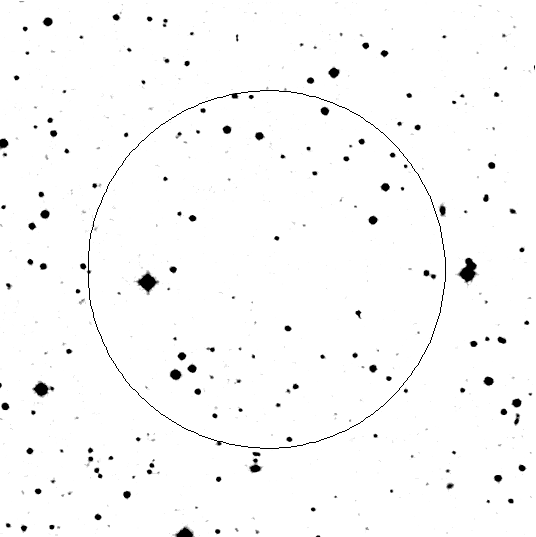
TITLE: GCN/FERMI NOTICE
NOTICE_DATE: Thu 18 Jun 09 08:28:42 UT
NOTICE_TYPE: Fermi-GBM Flight Position
RECORD_NUM: 47
TRIGGER_NUM: 267006508
GRB_RA: 304.583d {+20h 18m 20s} (J2000),
304.647d {+20h 18m 35s} (current),
304.245d {+20h 16m 59s} (1950)
GRB_DEC: +52.850d {+52d 51' 00"} (J2000),
+52.880d {+52d 52' 48"} (current),
+52.693d {+52d 41' 34"} (1950)
GRB_ERROR: 6.95 [deg radius, statistical plus systematic]
GRB_INTEN: 618 [cnts/sec]
DATA_SIGNIF: 6.90 [sigma]
INTEG_TIME: 0.512 [sec]
GRB_DATE: 15000 TJD; 169 DOY; 09/06/18
GRB_TIME: 30506.66 SOD {08:28:26.66} UT
GRB_PHI: 276.00 [deg]
GRB_THETA: 155.00 [deg]
DATA_TIME_SCALE: 0.5120 [sec]
HARD_RATIO: 0.00
LOC_ALGORITHM: 3 (version number of)
MOST_LIKELY: 100% Below horizon
2nd_MOST_LIKELY: 0% n/a
DETECTORS: 0,0,0, 0,1,0, 0,1,0, 0,0,0, 0,0,
SUN_POSTN: 86.99d {+05h 47m 59s} +23.41d {+23d 24' 32"}
SUN_DIST: 96.99 [deg] Sun_angle= 9.5 [hr] (West of Sun)
MOON_POSTN: 22.65d {+01h 30m 35s} +15.07d {+15d 03' 54"}
MOON_DIST: 70.83 [deg]
MOON_ILLUM: 26 [%]
GAL_COORDS: 88.27, 9.47 [deg] galactic lon,lat of the burst (or transient)
ECL_COORDS: 337.91, 68.29 [deg] ecliptic lon,lat of the burst (or transient)
COMMENTS: Fermi-GBM Flight-calculated Coordinates.
COMMENTS: This trigger occurred at longitude,latitude = 128.95,-1.85 [deg].
TITLE: GCN/FERMI NOTICE
NOTICE_DATE: Thu 18 Jun 09 08:28:52 UT
NOTICE_TYPE: Fermi-GBM Flight Position
RECORD_NUM: 57
TRIGGER_NUM: 267006508
GRB_RA: 291.700d {+19h 26m 48s} (J2000),
291.639d {+19h 26m 33s} (current),
292.018d {+19h 28m 04s} (1950)
GRB_DEC: +74.967d {+74d 57' 60"} (J2000),
+74.986d {+74d 59' 10"} (current),
+74.863d {+74d 51' 47"} (1950)
GRB_ERROR: 5.58 [deg radius, statistical plus systematic]
GRB_INTEN: 546 [cnts/sec]
DATA_SIGNIF: 19.50 [sigma]
INTEG_TIME: 4.096 [sec]
GRB_DATE: 15000 TJD; 169 DOY; 09/06/18
GRB_TIME: 30506.66 SOD {08:28:26.66} UT
GRB_PHI: 295.00 [deg]
GRB_THETA: 135.00 [deg]
DATA_TIME_SCALE: 4.0960 [sec]
HARD_RATIO: 0.35
LOC_ALGORITHM: 3 (version number of)
MOST_LIKELY: 94% GRB
2nd_MOST_LIKELY: 3% Generic Transient
DETECTORS: 0,0,0, 0,1,0, 0,1,0, 0,0,0, 0,0,
SUN_POSTN: 86.99d {+05h 47m 59s} +23.41d {+23d 24' 32"}
SUN_DIST: 80.35 [deg] Sun_angle= 10.4 [hr] (West of Sun)
MOON_POSTN: 22.65d {+01h 30m 35s} +15.07d {+15d 03' 56"}
MOON_DIST: 75.72 [deg]
MOON_ILLUM: 26 [%]
GAL_COORDS: 106.65, 23.88 [deg] galactic lon,lat of the burst (or transient)
ECL_COORDS: 59.54, 79.10 [deg] ecliptic lon,lat of the burst (or transient)
COMMENTS: Fermi-GBM Flight-calculated Coordinates.
COMMENTS: This trigger occurred at longitude,latitude = 128.95,-1.85 [deg].
TITLE: GCN/FERMI NOTICE
NOTICE_DATE: Thu 18 Jun 09 08:29:32 UT
NOTICE_TYPE: Fermi-GBM Ground Position
RECORD_NUM: 59
TRIGGER_NUM: 267006508
GRB_RA: 303.750d {+20h 15m 00s} (J2000),
303.614d {+20h 14m 27s} (current),
304.447d {+20h 17m 47s} (1950)
GRB_DEC: +80.300d {+80d 17' 60"} (J2000),
+80.329d {+80d 19' 45"} (current),
+80.144d {+80d 08' 38"} (1950)
GRB_ERROR: 1.00 [deg radius, statistical only]
DATA_SIGNIF: 47.80 [sigma]
DATA_INTERVAL: 4.096 [sec]
GRB_DATE: 15000 TJD; 169 DOY; 09/06/18
GRB_TIME: 30506.66 SOD {08:28:26.66} UT
GRB_PHI: 302.00 [deg]
GRB_THETA: 132.00 [deg]
E_RANGE: 44.032 - 279.965 [keV]
LOC_ALGORITHM: 413 (Gnd S/W Version number)
SUN_POSTN: 87.00d {+05h 47m 59s} +23.41d {+23d 24' 32"}
SUN_DIST: 74.46 [deg] Sun_angle= 9.6 [hr] (West of Sun)
MOON_POSTN: 22.65d {+01h 30m 37s} +15.07d {+15d 04' 05"}
MOON_DIST: 73.31 [deg]
MOON_ILLUM: 26 [%]
GAL_COORDS: 113.06, 23.33 [deg] galactic lon,lat of the burst (or transient)
ECL_COORDS: 70.45, 73.76 [deg] ecliptic lon,lat of the burst (or transient)
COMMENTS: Fermi-GBM Ground-calculated Coordinates.
COMMENTS: This Notice was ground-generated -- not flight-generated.
TITLE: GCN/FERMI NOTICE
NOTICE_DATE: Thu 18 Jun 09 08:29:28 UT
NOTICE_TYPE: Fermi-GBM Ground Position
RECORD_NUM: 56
TRIGGER_NUM: 267006508
GRB_RA: 288.960d {+19h 15m 50s} (J2000),
288.763d {+19h 15m 03s} (current),
289.983d {+19h 19m 56s} (1950)
GRB_DEC: +81.080d {+81d 04' 48"} (J2000),
+81.097d {+81d 05' 49"} (current),
+80.987d {+80d 59' 14"} (1950)
GRB_ERROR: 1.68 [deg radius, statistical only]
DATA_SIGNIF: 38.60 [sigma]
DATA_INTERVAL: 4.096 [sec]
GRB_DATE: 15000 TJD; 169 DOY; 09/06/18
GRB_TIME: 30506.66 SOD {08:28:26.66} UT
GRB_PHI: 300.00 [deg]
GRB_THETA: 130.00 [deg]
E_RANGE: 44.032 - 279.965 [keV]
LOC_ALGORITHM: 413 (Gnd S/W Version number)
SUN_POSTN: 87.00d {+05h 47m 59s} +23.41d {+23d 24' 32"}
SUN_DIST: 74.89 [deg] Sun_angle= 10.5 [hr] (West of Sun)
MOON_POSTN: 22.65d {+01h 30m 37s} +15.07d {+15d 04' 04"}
MOON_DIST: 75.72 [deg]
MOON_ILLUM: 26 [%]
GAL_COORDS: 113.07, 25.84 [deg] galactic lon,lat of the burst (or transient)
ECL_COORDS: 78.97, 74.73 [deg] ecliptic lon,lat of the burst (or transient)
COMMENTS: Fermi-GBM Ground-calculated Coordinates.
COMMENTS: This Notice was ground-generated -- not flight-generated.
TITLE: GCN/FERMI NOTICE
NOTICE_DATE: Thu 18 Jun 09 08:29:40 UT
NOTICE_TYPE: Fermi-GBM Flight Position
RECORD_NUM: 85
TRIGGER_NUM: 267006508
GRB_RA: 294.767d {+19h 39m 04s} (J2000),
294.683d {+19h 38m 44s} (current),
295.198d {+19h 40m 48s} (1950)
GRB_DEC: +76.817d {+76d 48' 60"} (J2000),
+76.839d {+76d 50' 19"} (current),
+76.699d {+76d 41' 56"} (1950)
GRB_ERROR: 5.02 [deg radius, statistical plus systematic]
GRB_INTEN: 541 [cnts/sec]
DATA_SIGNIF: 20.40 [sigma]
INTEG_TIME: 4.096 [sec]
GRB_DATE: 15000 TJD; 169 DOY; 09/06/18
GRB_TIME: 30506.66 SOD {08:28:26.66} UT
GRB_PHI: 295.00 [deg]
GRB_THETA: 135.00 [deg]
DATA_TIME_SCALE: 4.0960 [sec]
HARD_RATIO: 0.91
LOC_ALGORITHM: 3 (version number of)
MOST_LIKELY: 97% GRB
2nd_MOST_LIKELY: 1% Generic Transient
DETECTORS: 0,0,0, 0,1,0, 0,1,0, 0,0,0, 0,0,
SUN_POSTN: 87.00d {+05h 47m 59s} +23.41d {+23d 24' 32"}
SUN_DIST: 78.36 [deg] Sun_angle= 10.2 [hr] (West of Sun)
MOON_POSTN: 22.65d {+01h 30m 37s} +15.07d {+15d 04' 06"}
MOON_DIST: 74.87 [deg]
MOON_ILLUM: 26 [%]
GAL_COORDS: 108.82, 23.71 [deg] galactic lon,lat of the burst (or transient)
ECL_COORDS: 64.16, 77.34 [deg] ecliptic lon,lat of the burst (or transient)
COMMENTS: Fermi-GBM Flight-calculated Coordinates.
COMMENTS: This trigger occurred at longitude,latitude = 128.95,-1.85 [deg].
TITLE: GCN/FERMI NOTICE
NOTICE_DATE: Thu 18 Jun 09 08:29:47 UT
NOTICE_TYPE: Fermi-GBM Flight Position
RECORD_NUM: 124
TRIGGER_NUM: 267006508
GRB_RA: 295.600d {+19h 42m 24s} (J2000),
295.515d {+19h 42m 04s} (current),
296.041d {+19h 44m 10s} (1950)
GRB_DEC: +77.017d {+77d 00' 60"} (J2000),
+77.039d {+77d 02' 22"} (current),
+76.895d {+76d 53' 43"} (1950)
GRB_ERROR: 3.57 [deg radius, statistical plus systematic]
GRB_INTEN: 3167 [cnts/sec]
DATA_SIGNIF: 86.50 [sigma]
INTEG_TIME: 2.048 [sec]
GRB_DATE: 15000 TJD; 169 DOY; 09/06/18
GRB_TIME: 30506.66 SOD {08:28:26.66} UT
GRB_PHI: 295.00 [deg]
GRB_THETA: 135.00 [deg]
DATA_TIME_SCALE: 2.0480 [sec]
HARD_RATIO: 0.57
LOC_ALGORITHM: 3 (version number of)
MOST_LIKELY: 95% GRB
2nd_MOST_LIKELY: 4% Generic Transient
DETECTORS: 0,0,0, 0,1,0, 0,1,0, 0,0,0, 0,0,
SUN_POSTN: 87.00d {+05h 47m 59s} +23.41d {+23d 24' 32"}
SUN_DIST: 78.09 [deg] Sun_angle= 10.1 [hr] (West of Sun)
MOON_POSTN: 22.66d {+01h 30m 37s} +15.07d {+15d 04' 08"}
MOON_DIST: 74.68 [deg]
MOON_ILLUM: 26 [%]
GAL_COORDS: 109.10, 23.59 [deg] galactic lon,lat of the burst (or transient)
ECL_COORDS: 64.30, 77.06 [deg] ecliptic lon,lat of the burst (or transient)
COMMENTS: Fermi-GBM Flight-calculated Coordinates.
COMMENTS: This trigger occurred at longitude,latitude = 128.95,-1.85 [deg].
TITLE: GCN/FERMI NOTICE
NOTICE_DATE: Thu 18 Jun 09 08:29:55 UT
NOTICE_TYPE: Fermi-GBM Flight Position
RECORD_NUM: 127
TRIGGER_NUM: 267006508
GRB_RA: 296.200d {+19h 44m 48s} (J2000),
296.115d {+19h 44m 28s} (current),
296.641d {+19h 46m 34s} (1950)
GRB_DEC: +77.083d {+77d 04' 60"} (J2000),
+77.107d {+77d 06' 23"} (current),
+76.959d {+76d 57' 34"} (1950)
GRB_ERROR: 3.53 [deg radius, statistical plus systematic]
GRB_INTEN: 3511 [cnts/sec]
DATA_SIGNIF: 137.20 [sigma]
INTEG_TIME: 4.096 [sec]
GRB_DATE: 15000 TJD; 169 DOY; 09/06/18
GRB_TIME: 30506.66 SOD {08:28:26.66} UT
GRB_PHI: 295.00 [deg]
GRB_THETA: 135.00 [deg]
DATA_TIME_SCALE: 4.0960 [sec]
HARD_RATIO: 0.62
LOC_ALGORITHM: 3 (version number of)
MOST_LIKELY: 95% GRB
2nd_MOST_LIKELY: 3% Generic Transient
DETECTORS: 0,0,0, 0,1,0, 0,1,0, 0,0,0, 0,0,
SUN_POSTN: 87.00d {+05h 47m 59s} +23.41d {+23d 24' 32"}
SUN_DIST: 77.97 [deg] Sun_angle= 10.1 [hr] (West of Sun)
MOON_POSTN: 22.66d {+01h 30m 38s} +15.07d {+15d 04' 09"}
MOON_DIST: 74.55 [deg]
MOON_ILLUM: 26 [%]
GAL_COORDS: 109.21, 23.49 [deg] galactic lon,lat of the burst (or transient)
ECL_COORDS: 64.15, 76.92 [deg] ecliptic lon,lat of the burst (or transient)
COMMENTS: Fermi-GBM Flight-calculated Coordinates.
COMMENTS: This trigger occurred at longitude,latitude = 128.95,-1.85 [deg].
TITLE: GCN/FERMI NOTICE
NOTICE_DATE: Thu 18 Jun 09 08:30:42 UT
NOTICE_TYPE: Fermi-GBM Ground Position
RECORD_NUM: 88
TRIGGER_NUM: 267006508
GRB_RA: 306.670d {+20h 26m 41s} (J2000),
306.493d {+20h 25m 58s} (current),
307.573d {+20h 30m 17s} (1950)
GRB_DEC: +81.900d {+81d 54' 00"} (J2000),
+81.931d {+81d 55' 53"} (current),
+81.732d {+81d 43' 55"} (1950)
GRB_ERROR: 1.00 [deg radius, statistical only]
DATA_SIGNIF: 111.40 [sigma]
DATA_INTERVAL: 2.048 [sec]
GRB_DATE: 15000 TJD; 169 DOY; 09/06/18
GRB_TIME: 30506.66 SOD {08:28:26.66} UT
GRB_PHI: 301.00 [deg]
GRB_THETA: 132.00 [deg]
E_RANGE: 44.032 - 279.965 [keV]
LOC_ALGORITHM: 413 (Gnd S/W Version number)
SUN_POSTN: 87.00d {+05h 47m 59s} +23.41d {+23d 24' 32"}
SUN_DIST: 72.90 [deg] Sun_angle= 9.4 [hr] (West of Sun)
MOON_POSTN: 22.66d {+01h 30m 39s} +15.07d {+15d 04' 19"}
MOON_DIST: 73.15 [deg]
MOON_ILLUM: 26 [%]
GAL_COORDS: 114.84, 23.63 [deg] galactic lon,lat of the burst (or transient)
ECL_COORDS: 73.83, 72.42 [deg] ecliptic lon,lat of the burst (or transient)
COMMENTS: Fermi-GBM Ground-calculated Coordinates.
COMMENTS: This Notice was ground-generated -- not flight-generated.
TITLE: GCN/FERMI NOTICE
NOTICE_DATE: Thu 18 Jun 09 08:30:44 UT
NOTICE_TYPE: Fermi-GBM Ground Position
RECORD_NUM: 126
TRIGGER_NUM: 267006508
GRB_RA: 281.440d {+18h 45m 46s} (J2000),
280.999d {+18h 44m 00s} (current),
283.734d {+18h 54m 56s} (1950)
GRB_DEC: +84.740d {+84d 44' 24"} (J2000),
+84.750d {+84d 45' 01"} (current),
+84.679d {+84d 40' 45"} (1950)
GRB_ERROR: 1.00 [deg radius, statistical only]
DATA_SIGNIF: 282.90 [sigma]
DATA_INTERVAL: 4.096 [sec]
GRB_DATE: 15000 TJD; 169 DOY; 09/06/18
GRB_TIME: 30506.66 SOD {08:28:26.66} UT
GRB_PHI: 300.00 [deg]
GRB_THETA: 128.00 [deg]
E_RANGE: 44.032 - 279.965 [keV]
LOC_ALGORITHM: 413 (Gnd S/W Version number)
SUN_POSTN: 87.00d {+05h 47m 59s} +23.41d {+23d 24' 32"}
SUN_DIST: 71.69 [deg] Sun_angle= 11.1 [hr] (West of Sun)
MOON_POSTN: 22.66d {+01h 30m 39s} +15.07d {+15d 04' 20"}
MOON_DIST: 76.05 [deg]
MOON_ILLUM: 26 [%]
GAL_COORDS: 117.02, 27.13 [deg] galactic lon,lat of the burst (or transient)
ECL_COORDS: 86.68, 71.69 [deg] ecliptic lon,lat of the burst (or transient)
COMMENTS: Fermi-GBM Ground-calculated Coordinates.
COMMENTS: This Notice was ground-generated -- not flight-generated.
TITLE: GCN/INTEGRAL NOTICE
NOTICE_DATE: Thu 18 Jun 09 08:29:46 UT
NOTICE_TYPE: INTEGRAL SPI ACS Trigger
TRIGGER_NUM: 5887, Sub_Num: 0
GRB_INTEN: 9.11 [sigma]
GRB_TIME: 30502.86 SOD {08:28:22.86} UT
GRB_DATE: 15000 TJD; 169 DOY; 09/06/18
COMMENTS: INTEGRAL SPI_ACS GRB Trigger.
COMMENTS:
+ftp://isdcarc.unige.ch/arc/FTP/ibas/spiacs/2009-06/2009-06-18T08-28-22.7716-00651-00007-0.lc
TITLE: GCN/SWIFT NOTICE
NOTICE_DATE: Thu 18 Jun 09 08:30:58 UT
NOTICE_TYPE: Swift-XRT Position
TRIGGER_NUM: 355083, Seg_Num: 0
GRB_RA: 293.9897d {+19h 35m 57.52s} (J2000),
293.8770d {+19h 35m 30.48s} (current),
294.5746d {+19h 38m 17.90s} (1950)
GRB_DEC: +78.3576d {+78d 21' 27.3"} (J2000),
+78.3790d {+78d 22' 44.2"} (current),
+78.2431d {+78d 14' 35.1"} (1950)
GRB_ERROR: 4.7 [arcsec radius, statistical plus systematic, 90% containment]
GRB_INTEN: 3.15e-07 [erg/cm2/sec]
GRB_SIGNIF: 14.73 [sigma]
IMG_START_DATE: 15000 TJD; 169 DOY; 09/06/18
IMG_START_TIME: 30630.75 SOD {08:30:30.75} UT, 120.9 [sec] since BAT Trigger Time
TAM[0-3]: 327.65 237.23 261.62 243.45
AMPLIFIER: 2
WAVEFORM: 134
SUN_POSTN: 87.00d {+05h 47m 59s} +23.41d {+23d 24' 32"}
SUN_DIST: 77.04 [deg] Sun_angle= 10.2 [hr] (West of Sun)
MOON_POSTN: 22.67d {+01h 30m 40s} +15.07d {+15d 04' 23"}
MOON_DIST: 75.00 [deg]
MOON_ILLUM: 26 [%]
GAL_COORDS: 110.38, 24.33 [deg] galactic lon,lat of the burst
ECL_COORDS: 69.58, 76.40 [deg] ecliptic lon,lat of the burst
COMMENTS: SWIFT-XRT Coordinates.
COMMENTS: The XRT position is 0.45 arcmin from the BAT position.
COMMENTS: The object found at this position is either a very bright burst or a cosmic ray hit.
COMMENTS: Examine the XRT Image to differentiate (CRs are much more compact); see examples at:
COMMENTS: http://www.swift.psu.edu/xrt/XRT_Postage_Stamp_Image_Photo_Gallery.htm .
TITLE: GCN/SWIFT NOTICE
NOTICE_DATE: Thu 18 Jun 09 08:31:14 UT
NOTICE_TYPE: Swift-XRT Processed Image
TRIGGER_NUM: 355083, Seg_Num: 0
GRB_RA: 293.9897d {+19h 35m 57.5s} (J2000),
293.8770d {+19h 35m 30.4s} (current),
294.5746d {+19h 38m 17.9s} (1950)
GRB_DEC: +78.3576d {+78d 21' 27.3"} (J2000),
+78.3790d {+78d 22' 44.2"} (current),
+78.2431d {+78d 14' 35.1"} (1950)
GRB_ERROR: 4.7 [arcsec, radius, statistical plus systematic]
GRB_INTEN: 217 [cnts]
IMG_START_DATE: 15000 TJD; 169 DOY; 09/06/18
IMG_START_TIME: 30630.75 SOD {08:30:30.75} UT, 120.9 [sec] since BAT Trigger Time
CENTROID_X: 334.04, raw= 334 [pixels]
CENTROID_Y: 315.57, raw= 316 [pixels]
ROLL: 25.41 [deg]
GAIN: 4
MODE: 2, Short Image mode
WAVEFORM: 134
EXPO_TIME: 0.10 [sec]
GRB_POS_XRT_Y: 41.43
GRB_POS_XRT_Z: 74.82
IMAGE_URL: sw00355083000msxps_rw.img
SUN_POSTN: 87.00d {+05h 47m 59s} +23.41d {+23d 24' 32"}
SUN_DIST: 77.04 [deg] Sun_angle= 10.2 [hr] (West of Sun)
MOON_POSTN: 22.67d {+01h 30m 41s} +15.07d {+15d 04' 26"}
MOON_DIST: 75.00 [deg]
MOON_ILLUM: 26 [%]
GAL_COORDS: 110.38, 24.33 [deg] galactic lon,lat of the burst
ECL_COORDS: 69.58, 76.40 [deg] ecliptic lon,lat of the burst
COMMENTS: SWIFT-XRT Processed Image.

TITLE: GCN/SWIFT NOTICE
NOTICE_DATE: Thu 18 Jun 09 08:31:08 UT
NOTICE_TYPE: Swift-XRT Image
TRIGGER_NUM: 355083, Seg_Num: 0
GRB_RA: 293.9897d {+19h 35m 57.5s} (J2000),
293.8770d {+19h 35m 30.4s} (current),
294.5746d {+19h 38m 17.9s} (1950)
GRB_DEC: +78.3576d {+78d 21' 27.3"} (J2000),
+78.3790d {+78d 22' 44.2"} (current),
+78.2431d {+78d 14' 35.1"} (1950)
GRB_ERROR: 4.7 [arcsec, radius, statistical plus systematic]
GRB_INTEN: 217 [cnts]
IMG_START_DATE: 15000 TJD; 169 DOY; 09/06/18
IMG_START_TIME: 30630.75 SOD {08:30:30.75} UT, 120.9 [sec] since BAT Trigger Time
CENTROID_X: 334.04, raw= 334 [pixels]
CENTROID_Y: 315.57, raw= 316 [pixels]
ROLL: 25.41 [deg]
GAIN: 4
MODE: 2, Short Image mode
WAVEFORM: 134
EXPO_TIME: 0.10 [sec]
GRB_POS_XRT_Y: 41.43
GRB_POS_XRT_Z: 74.82
IMAGE_URL: sw00355083000msxps_rw.img
SUN_POSTN: 87.00d {+05h 47m 59s} +23.41d {+23d 24' 32"}
SUN_DIST: 77.04 [deg] Sun_angle= 10.2 [hr] (West of Sun)
MOON_POSTN: 22.67d {+01h 30m 40s} +15.07d {+15d 04' 25"}
MOON_DIST: 75.00 [deg]
MOON_ILLUM: 26 [%]
GAL_COORDS: 110.38, 24.33 [deg] galactic lon,lat of the burst
ECL_COORDS: 69.58, 76.40 [deg] ecliptic lon,lat of the burst
COMMENTS: SWIFT-XRT Image.

TITLE: GCN/SWIFT NOTICE
NOTICE_DATE: Thu 18 Jun 09 08:32:00 UT
NOTICE_TYPE: Swift-BAT GRB Lightcurve
TRIGGER_NUM: 355083, Seg_Num: 0
GRB_RA: 294.021d {+19h 36m 05s} (J2000),
293.909d {+19h 35m 38s} (current),
294.605d {+19h 38m 25s} (1950)
GRB_DEC: +78.353d {+78d 21' 13"} (J2000),
+78.375d {+78d 22' 30"} (current),
+78.239d {+78d 14' 20"} (1950)
GRB_DATE: 15000 TJD; 169 DOY; 09/06/18
GRB_TIME: 30509.85 SOD {08:28:29.85} UT
TRIGGER_INDEX: 146
GRB_PHI: 23.57 [deg]
GRB_THETA: 31.12 [deg]
DELTA_TIME: 52.00 [sec]
TRIGGER_DUR: 1.024 [sec]
SOLN_STATUS: 0x3
RATE_SIGNIF: 85.83 [sigma]
IMAGE_SIGNIF: 22.57 [sigma]
LC_URL: sw00355083000msb.lc
SUN_POSTN: 87.00d {+05h 47m 59s} +23.41d {+23d 24' 32"}
SUN_DIST: 77.04 [deg] Sun_angle= 10.2 [hr] (West of Sun)
MOON_POSTN: 22.68d {+01h 30m 42s} +15.08d {+15d 04' 36"}
MOON_DIST: 74.99 [deg]
MOON_ILLUM: 26 [%]
GAL_COORDS: 110.38, 24.32 [deg] galactic lon,lat of the burst (or transient)
ECL_COORDS: 69.55, 76.39 [deg] ecliptic lon,lat of the burst (or transient)
COMMENTS: SWIFT-BAT GRB Lightcurve.
COMMENTS:
COMMENTS: The next comments were copied from the BAT_POS Notice:
COMMENTS: This is a rate trigger.
COMMENTS: A point_source was found.
COMMENTS: This does not match any source in the on-board catalog.
COMMENTS: This does not match any source in the ground catalog.
COMMENTS: This is a GRB.
COMMENTS: This trigger occurred at longitude,latitude = 166.93,3.09 [deg].
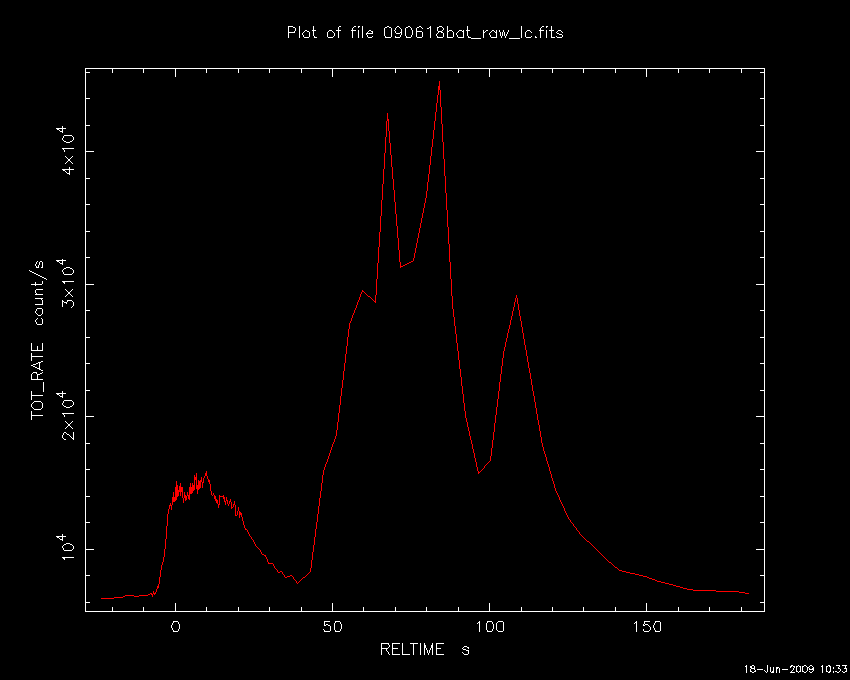
TITLE: GCN/SWIFT NOTICE
NOTICE_DATE: Thu 18 Jun 09 08:33:29 UT
NOTICE_TYPE: Swift-UVOT Source List
TRIGGER_NUM: 355083, Seg_Num: 0
POINT_RA: 294.090d {+19h 36m 22s} (J2000)
POINT_DEC: +78.370d {+78d 22' 11"} (J2000)
POINT_ROLL: 25.418d
IMG_START_DATE: 15000 TJD; 169 DOY; 09/06/18
IMG_START_TIME: 30638.18 SOD {08:30:38.18} UT, 128.3 [sec] since BAT Trigger Time
FILTER: 10, White
BKG_MEAN: 1.736
N_STARS: 65
X_OFFSET: 320 [pixels]
Y_OFFSET: 600 [pixels]
X_MAX: 1279 [pixels]
Y_MAX: 1559 [pixels]
DET_THRESH: 11
PHOTO_THRESH: 5
SL_URL: sw00355083000msufc0128.fits
SUN_POSTN: 87.00d {+05h 48m 00s} +23.41d {+23d 24' 32"}
SUN_DIST: 77.02 [deg] Sun_angle= 10.2 [hr] (West of Sun)
MOON_POSTN: 22.69d {+01h 30m 45s} +15.08d {+15d 04' 55"}
MOON_DIST: 74.97 [deg]
MOON_ILLUM: 26 [%]
GAL_COORDS: 110.40, 24.31 [deg] galactic lon,lat of the pointing direction
ECL_COORDS: 69.56, 76.37 [deg] ecliptic lon,lat of the pointing direction
COMMENTS: SWIFT-UVOT Source List.
TITLE: GCN/SWIFT NOTICE
NOTICE_DATE: Thu 18 Jun 09 08:34:09 UT
NOTICE_TYPE: Swift-UVOT Processed Source List
TRIGGER_NUM: 355083, Seg_Num: 0
POINT_RA: 294.090d {+19h 36m 22s} (J2000)
POINT_DEC: +78.370d {+78d 22' 11"} (J2000)
POINT_ROLL: 25.418d
IMG_START_DATE: 15000 TJD; 169 DOY; 09/06/18
IMG_START_TIME: 30638.18 SOD {08:30:38.18} UT, 128.3 [sec] since BAT Trigger Time
FILTER: 10, White
BKG_MEAN: 1.736
N_STARS: 65
X_OFFSET: 320 [pixels]
Y_OFFSET: 600 [pixels]
X_MAX: 1279 [pixels]
Y_MAX: 1559 [pixels]
DET_THRESH: 11
PHOTO_THRESH: 5
SL_URL: sw00355083000msufc0128.fits
SUN_POSTN: 87.00d {+05h 48m 00s} +23.41d {+23d 24' 32"}
SUN_DIST: 77.02 [deg] Sun_angle= 10.2 [hr] (West of Sun)
MOON_POSTN: 22.70d {+01h 30m 47s} +15.08d {+15d 05' 03"}
MOON_DIST: 74.97 [deg]
MOON_ILLUM: 26 [%]
GAL_COORDS: 110.40, 24.31 [deg] galactic lon,lat of the pointing direction
ECL_COORDS: 69.56, 76.37 [deg] ecliptic lon,lat of the pointing direction
COMMENTS: SWIFT-UVOT Processed Source List.
COMMENTS: All 4 attachments are included.
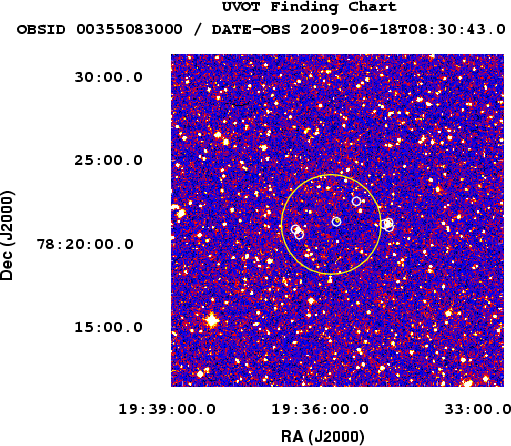
TITLE: GCN/SWIFT NOTICE
NOTICE_DATE: Thu 18 Jun 09 08:33:29 UT
NOTICE_TYPE: Swift-UVOT Source List
TRIGGER_NUM: 355083, Seg_Num: 0
POINT_RA: 294.090d {+19h 36m 22s} (J2000)
POINT_DEC: +78.370d {+78d 22' 11"} (J2000)
POINT_ROLL: 25.418d
IMG_START_DATE: 15000 TJD; 169 DOY; 09/06/18
IMG_START_TIME: 30638.18 SOD {08:30:38.18} UT, 128.3 [sec] since BAT Trigger Time
FILTER: 10, White
BKG_MEAN: 1.736
N_STARS: 65
X_OFFSET: 320 [pixels]
Y_OFFSET: 600 [pixels]
X_MAX: 1279 [pixels]
Y_MAX: 1559 [pixels]
DET_THRESH: 11
PHOTO_THRESH: 5
SL_URL: sw00355083000msufc0128.fits
SUN_POSTN: 87.00d {+05h 48m 00s} +23.41d {+23d 24' 32"}
SUN_DIST: 77.02 [deg] Sun_angle= 10.2 [hr] (West of Sun)
MOON_POSTN: 22.69d {+01h 30m 45s} +15.08d {+15d 04' 55"}
MOON_DIST: 74.97 [deg]
MOON_ILLUM: 26 [%]
GAL_COORDS: 110.40, 24.31 [deg] galactic lon,lat of the pointing direction
ECL_COORDS: 69.56, 76.37 [deg] ecliptic lon,lat of the pointing direction
COMMENTS: SWIFT-UVOT Source List.
TITLE: GCN/SWIFT NOTICE
NOTICE_DATE: Thu 18 Jun 09 08:34:51 UT
NOTICE_TYPE: Swift-UVOT Image
TRIGGER_NUM: 355083, Seg_Num: 0
POINT_RA: 294.090d {+19h 36m 22s} (J2000)
POINT_DEC: +78.370d {+78d 22' 11"} (J2000)
ROLL: 25.418d
IMG_START_DATE: 15000 TJD; 169 DOY; 09/06/18
IMG_START_TIME: 30638.18 SOD {08:30:38.18} UT, 128.3 [sec] since BAT Trigger Time
FILTER: 10, White
EXPOSURE_ID: 267006643
X_OFFSET: 624 [pixels]
Y_OFFSET: 875 [pixels]
WIDTH: 160 [pixels]
HEIGHT: 160 [pixels]
X_GRB_POS: 784
Y_GRB_POS: 1035
BINNING_INDEX: 1
IM_URL: sw00355083000msuni0133.fits
SUN_POSTN: 87.00d {+05h 48m 00s} +23.41d {+23d 24' 32"}
SUN_DIST: 77.02 [deg] Sun_angle= 10.2 [hr] (West of Sun)
MOON_POSTN: 22.70d {+01h 30m 48s} +15.09d {+15d 05' 12"}
MOON_DIST: 74.97 [deg]
MOON_ILLUM: 26 [%]
GAL_COORDS: 110.40, 24.31 [deg] galactic lon,lat of the pointing direction
ECL_COORDS: 69.56, 76.37 [deg] ecliptic lon,lat of the pointing direction
COMMENTS: SWIFT-UVOT Image.
COMMENTS: The GRB Position came from the XRT Position Command.
COMMENTS: The image has 2x2 binning (compression).
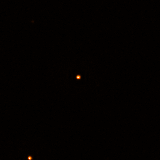
TITLE: GCN/SWIFT NOTICE
NOTICE_DATE: Thu 18 Jun 09 08:35:18 UT
NOTICE_TYPE: Swift-UVOT Processed Image
TRIGGER_NUM: 355083, Seg_Num: 0
POINT_RA: 294.090d {+19h 36m 22s} (J2000)
POINT_DEC: +78.370d {+78d 22' 11"} (J2000)
ROLL: 25.418d
IMG_START_DATE: 15000 TJD; 169 DOY; 09/06/18
IMG_START_TIME: 30638.18 SOD {08:30:38.18} UT, 128.3 [sec] since BAT Trigger Time
FILTER: 10, White
EXPOSURE_ID: 267006643
X_OFFSET: 624 [pixels]
Y_OFFSET: 875 [pixels]
WIDTH: 160 [pixels]
HEIGHT: 160 [pixels]
X_GRB_POS: 784
Y_GRB_POS: 1035
BINNING_INDEX: 1
IM_URL: sw00355083000msuni0133.fits
SUN_POSTN: 87.00d {+05h 48m 00s} +23.41d {+23d 24' 32"}
SUN_DIST: 77.02 [deg] Sun_angle= 10.2 [hr] (West of Sun)
MOON_POSTN: 22.71d {+01h 30m 49s} +15.09d {+15d 05' 18"}
MOON_DIST: 74.97 [deg]
MOON_ILLUM: 26 [%]
GAL_COORDS: 110.40, 24.31 [deg] galactic lon,lat of the pointing direction
ECL_COORDS: 69.56, 76.37 [deg] ecliptic lon,lat of the pointing direction
COMMENTS: SWIFT-UVOT Processed Image.
COMMENTS: The GRB Position came from the XRT Position Command.
COMMENTS: The image has 2x2 binning (compression).
COMMENTS: All 4 attachments are included.
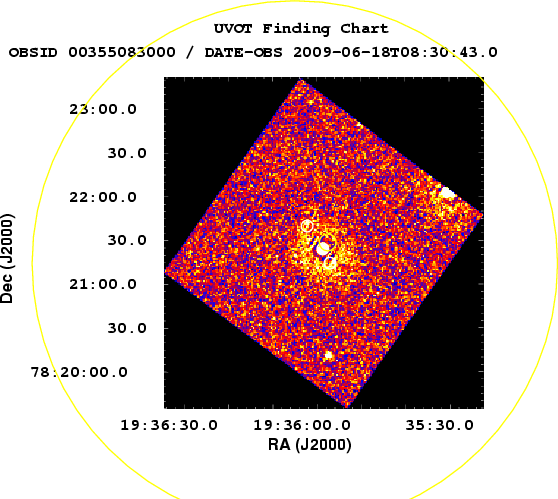
TITLE: GCN/FERMI NOTICE
NOTICE_DATE: Thu 18 Jun 09 08:30:30 UT
NOTICE_TYPE: Fermi-GBM Ground Position
RECORD_NUM: 87
TRIGGER_NUM: 267006508
GRB_RA: 294.780d {+19h 39m 07s} (J2000),
294.697d {+19h 38m 47s} (current),
295.212d {+19h 40m 51s} (1950)
GRB_DEC: +76.820d {+76d 49' 12"} (J2000),
+76.842d {+76d 50' 31"} (current),
+76.702d {+76d 42' 08"} (1950)
GRB_ERROR: 1.81 [deg radius, statistical only]
DATA_SIGNIF: 45.10 [sigma]
DATA_INTERVAL: 4.096 [sec]
GRB_DATE: 15000 TJD; 169 DOY; 09/06/18
GRB_TIME: 30506.66 SOD {08:28:26.66} UT
GRB_PHI: 295.00 [deg]
GRB_THETA: 135.00 [deg]
E_RANGE: 44.032 - 279.965 [keV]
LOC_ALGORITHM: 413 (Gnd S/W Version number)
SUN_POSTN: 87.00d {+05h 47m 59s} +23.41d {+23d 24' 32"}
SUN_DIST: 78.35 [deg] Sun_angle= 10.2 [hr] (West of Sun)
MOON_POSTN: 22.66d {+01h 30m 39s} +15.07d {+15d 04' 17"}
MOON_DIST: 74.87 [deg]
MOON_ILLUM: 26 [%]
GAL_COORDS: 108.83, 23.71 [deg] galactic lon,lat of the burst (or transient)
ECL_COORDS: 64.16, 77.33 [deg] ecliptic lon,lat of the burst (or transient)
COMMENTS: Fermi-GBM Ground-calculated Coordinates.
COMMENTS: This Notice was ground-generated -- not flight-generated.
TITLE: GCN/SWIFT NOTICE
NOTICE_DATE: Thu 18 Jun 09 08:40:10 UT
NOTICE_TYPE: Swift-UVOT Source List
TRIGGER_NUM: 355083, Seg_Num: 0
POINT_RA: 294.085d {+19h 36m 20s} (J2000)
POINT_DEC: +78.371d {+78d 22' 17"} (J2000)
POINT_ROLL: 25.413d
IMG_START_DATE: 15000 TJD; 169 DOY; 09/06/18
IMG_START_TIME: 30850.08 SOD {08:34:10.08} UT, 340.2 [sec] since BAT Trigger Time
FILTER: 7, U
BKG_MEAN: 0.472
N_STARS: 46
X_OFFSET: 304 [pixels]
Y_OFFSET: 555 [pixels]
X_MAX: 1263 [pixels]
Y_MAX: 1514 [pixels]
DET_THRESH: 6
PHOTO_THRESH: 3
SL_URL: sw00355083000msufc0340.fits
SUN_POSTN: 87.00d {+05h 48m 01s} +23.41d {+23d 24' 32"}
SUN_DIST: 77.02 [deg] Sun_angle= 10.2 [hr] (West of Sun)
MOON_POSTN: 22.75d {+01h 31m 00s} +15.11d {+15d 06' 19"}
MOON_DIST: 74.97 [deg]
MOON_ILLUM: 26 [%]
GAL_COORDS: 110.40, 24.31 [deg] galactic lon,lat of the pointing direction
ECL_COORDS: 69.57, 76.37 [deg] ecliptic lon,lat of the pointing direction
COMMENTS: SWIFT-UVOT Source List.
TITLE: GCN/SWIFT NOTICE
NOTICE_DATE: Thu 18 Jun 09 08:40:10 UT
NOTICE_TYPE: Swift-UVOT Source List
TRIGGER_NUM: 355083, Seg_Num: 0
POINT_RA: 294.085d {+19h 36m 20s} (J2000)
POINT_DEC: +78.371d {+78d 22' 17"} (J2000)
POINT_ROLL: 25.413d
IMG_START_DATE: 15000 TJD; 169 DOY; 09/06/18
IMG_START_TIME: 30850.08 SOD {08:34:10.08} UT, 340.2 [sec] since BAT Trigger Time
FILTER: 7, U
BKG_MEAN: 0.472
N_STARS: 46
X_OFFSET: 304 [pixels]
Y_OFFSET: 555 [pixels]
X_MAX: 1263 [pixels]
Y_MAX: 1514 [pixels]
DET_THRESH: 6
PHOTO_THRESH: 3
SL_URL: sw00355083000msufc0340.fits
SUN_POSTN: 87.00d {+05h 48m 01s} +23.41d {+23d 24' 32"}
SUN_DIST: 77.02 [deg] Sun_angle= 10.2 [hr] (West of Sun)
MOON_POSTN: 22.75d {+01h 31m 00s} +15.11d {+15d 06' 19"}
MOON_DIST: 74.97 [deg]
MOON_ILLUM: 26 [%]
GAL_COORDS: 110.40, 24.31 [deg] galactic lon,lat of the pointing direction
ECL_COORDS: 69.57, 76.37 [deg] ecliptic lon,lat of the pointing direction
COMMENTS: SWIFT-UVOT Source List.
TITLE: GCN/SWIFT NOTICE
NOTICE_DATE: Thu 18 Jun 09 08:40:37 UT
NOTICE_TYPE: Swift-UVOT Processed Source List
TRIGGER_NUM: 355083, Seg_Num: 0
POINT_RA: 294.085d {+19h 36m 20s} (J2000)
POINT_DEC: +78.371d {+78d 22' 17"} (J2000)
POINT_ROLL: 25.413d
IMG_START_DATE: 15000 TJD; 169 DOY; 09/06/18
IMG_START_TIME: 30850.08 SOD {08:34:10.08} UT, 340.2 [sec] since BAT Trigger Time
FILTER: 7, U
BKG_MEAN: 0.472
N_STARS: 46
X_OFFSET: 304 [pixels]
Y_OFFSET: 555 [pixels]
X_MAX: 1263 [pixels]
Y_MAX: 1514 [pixels]
DET_THRESH: 6
PHOTO_THRESH: 3
SL_URL: sw00355083000msufc0340.fits
SUN_POSTN: 87.00d {+05h 48m 01s} +23.41d {+23d 24' 32"}
SUN_DIST: 77.02 [deg] Sun_angle= 10.2 [hr] (West of Sun)
MOON_POSTN: 22.75d {+01h 31m 01s} +15.11d {+15d 06' 25"}
MOON_DIST: 74.96 [deg]
MOON_ILLUM: 26 [%]
GAL_COORDS: 110.40, 24.31 [deg] galactic lon,lat of the pointing direction
ECL_COORDS: 69.57, 76.37 [deg] ecliptic lon,lat of the pointing direction
COMMENTS: SWIFT-UVOT Processed Source List.
COMMENTS: All 4 attachments are included.
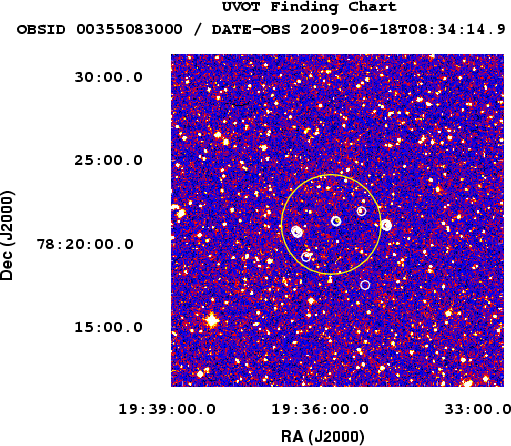
TITLE: GCN/SWIFT NOTICE
NOTICE_DATE: Thu 18 Jun 09 08:41:20 UT
NOTICE_TYPE: Swift-UVOT Image
TRIGGER_NUM: 355083, Seg_Num: 0
POINT_RA: 294.085d {+19h 36m 20s} (J2000)
POINT_DEC: +78.371d {+78d 22' 17"} (J2000)
ROLL: 25.413d
IMG_START_DATE: 15000 TJD; 169 DOY; 09/06/18
IMG_START_TIME: 30850.08 SOD {08:34:10.08} UT, 340.2 [sec] since BAT Trigger Time
FILTER: 7, U
EXPOSURE_ID: 267006854
X_OFFSET: 624 [pixels]
Y_OFFSET: 875 [pixels]
WIDTH: 160 [pixels]
HEIGHT: 160 [pixels]
X_GRB_POS: 784
Y_GRB_POS: 1035
BINNING_INDEX: 1
IM_URL: sw00355083000msuni0345.fits
SUN_POSTN: 87.00d {+05h 48m 01s} +23.41d {+23d 24' 32"}
SUN_DIST: 77.02 [deg] Sun_angle= 10.2 [hr] (West of Sun)
MOON_POSTN: 22.76d {+01h 31m 03s} +15.11d {+15d 06' 34"}
MOON_DIST: 74.96 [deg]
MOON_ILLUM: 26 [%]
GAL_COORDS: 110.40, 24.31 [deg] galactic lon,lat of the pointing direction
ECL_COORDS: 69.57, 76.37 [deg] ecliptic lon,lat of the pointing direction
COMMENTS: SWIFT-UVOT Image.
COMMENTS: The GRB Position came from the XRT Position Command.
COMMENTS: The image has 2x2 binning (compression).
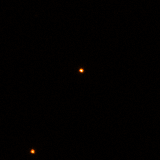
TITLE: GCN/SWIFT NOTICE
NOTICE_DATE: Thu 18 Jun 09 08:41:36 UT
NOTICE_TYPE: Swift-UVOT Processed Image
TRIGGER_NUM: 355083, Seg_Num: 0
POINT_RA: 294.085d {+19h 36m 20s} (J2000)
POINT_DEC: +78.371d {+78d 22' 17"} (J2000)
ROLL: 25.413d
IMG_START_DATE: 15000 TJD; 169 DOY; 09/06/18
IMG_START_TIME: 30850.08 SOD {08:34:10.08} UT, 340.2 [sec] since BAT Trigger Time
FILTER: 7, U
EXPOSURE_ID: 267006854
X_OFFSET: 624 [pixels]
Y_OFFSET: 875 [pixels]
WIDTH: 160 [pixels]
HEIGHT: 160 [pixels]
X_GRB_POS: 784
Y_GRB_POS: 1035
BINNING_INDEX: 1
IM_URL: sw00355083000msuni0345.fits
SUN_POSTN: 87.00d {+05h 48m 01s} +23.41d {+23d 24' 32"}
SUN_DIST: 77.02 [deg] Sun_angle= 10.2 [hr] (West of Sun)
MOON_POSTN: 22.76d {+01h 31m 03s} +15.11d {+15d 06' 37"}
MOON_DIST: 74.96 [deg]
MOON_ILLUM: 26 [%]
GAL_COORDS: 110.40, 24.31 [deg] galactic lon,lat of the pointing direction
ECL_COORDS: 69.57, 76.37 [deg] ecliptic lon,lat of the pointing direction
COMMENTS: SWIFT-UVOT Processed Image.
COMMENTS: The GRB Position came from the XRT Position Command.
COMMENTS: The image has 2x2 binning (compression).
COMMENTS: All 4 attachments are included.
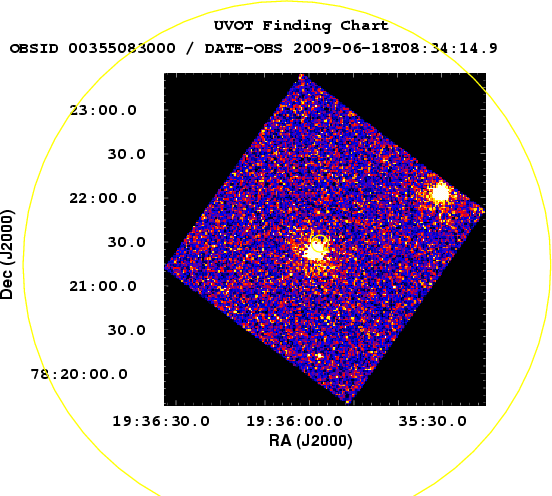
TITLE: GCN/SWIFT NOTICE
NOTICE_DATE: Thu 18 Jun 09 08:45:55 UT
NOTICE_TYPE: Swift-UVOT Source List
TRIGGER_NUM: 355083, Seg_Num: 0
POINT_RA: 294.086d {+19h 36m 21s} (J2000)
POINT_DEC: +78.371d {+78d 22' 17"} (J2000)
POINT_ROLL: 25.415d
IMG_START_DATE: 15000 TJD; 169 DOY; 09/06/18
IMG_START_TIME: 31379.81 SOD {08:42:59.81} UT, 870.0 [sec] since BAT Trigger Time
FILTER: 10, White
BKG_MEAN: 1.636
N_STARS: 162
X_OFFSET: 64 [pixels]
Y_OFFSET: 315 [pixels]
X_MAX: 1503 [pixels]
Y_MAX: 1754 [pixels]
DET_THRESH: 11
PHOTO_THRESH: 5
SL_URL: sw00355083000msufc0869.fits
SUN_POSTN: 87.01d {+05h 48m 02s} +23.41d {+23d 24' 33"}
SUN_DIST: 77.02 [deg] Sun_angle= 10.2 [hr] (West of Sun)
MOON_POSTN: 22.80d {+01h 31m 13s} +15.13d {+15d 07' 32"}
MOON_DIST: 74.96 [deg]
MOON_ILLUM: 26 [%]
GAL_COORDS: 110.40, 24.31 [deg] galactic lon,lat of the pointing direction
ECL_COORDS: 69.56, 76.37 [deg] ecliptic lon,lat of the pointing direction
COMMENTS: SWIFT-UVOT Source List.
TITLE: GCN/SWIFT NOTICE
NOTICE_DATE: Thu 18 Jun 09 08:45:55 UT
NOTICE_TYPE: Swift-UVOT Source List
TRIGGER_NUM: 355083, Seg_Num: 0
POINT_RA: 294.086d {+19h 36m 21s} (J2000)
POINT_DEC: +78.371d {+78d 22' 17"} (J2000)
POINT_ROLL: 25.415d
IMG_START_DATE: 15000 TJD; 169 DOY; 09/06/18
IMG_START_TIME: 31379.81 SOD {08:42:59.81} UT, 870.0 [sec] since BAT Trigger Time
FILTER: 10, White
BKG_MEAN: 1.636
N_STARS: 162
X_OFFSET: 64 [pixels]
Y_OFFSET: 315 [pixels]
X_MAX: 1503 [pixels]
Y_MAX: 1754 [pixels]
DET_THRESH: 11
PHOTO_THRESH: 5
SL_URL: sw00355083000msufc0869.fits
SUN_POSTN: 87.01d {+05h 48m 02s} +23.41d {+23d 24' 33"}
SUN_DIST: 77.02 [deg] Sun_angle= 10.2 [hr] (West of Sun)
MOON_POSTN: 22.80d {+01h 31m 13s} +15.13d {+15d 07' 32"}
MOON_DIST: 74.96 [deg]
MOON_ILLUM: 26 [%]
GAL_COORDS: 110.40, 24.31 [deg] galactic lon,lat of the pointing direction
ECL_COORDS: 69.56, 76.37 [deg] ecliptic lon,lat of the pointing direction
COMMENTS: SWIFT-UVOT Source List.
TITLE: GCN/SWIFT NOTICE
NOTICE_DATE: Thu 18 Jun 09 08:46:33 UT
NOTICE_TYPE: Swift-UVOT Processed Source List
TRIGGER_NUM: 355083, Seg_Num: 0
POINT_RA: 294.086d {+19h 36m 21s} (J2000)
POINT_DEC: +78.371d {+78d 22' 17"} (J2000)
POINT_ROLL: 25.415d
IMG_START_DATE: 15000 TJD; 169 DOY; 09/06/18
IMG_START_TIME: 31379.81 SOD {08:42:59.81} UT, 870.0 [sec] since BAT Trigger Time
FILTER: 10, White
BKG_MEAN: 1.636
N_STARS: 162
X_OFFSET: 64 [pixels]
Y_OFFSET: 315 [pixels]
X_MAX: 1503 [pixels]
Y_MAX: 1754 [pixels]
DET_THRESH: 11
PHOTO_THRESH: 5
SL_URL: sw00355083000msufc0869.fits
SUN_POSTN: 87.01d {+05h 48m 02s} +23.41d {+23d 24' 33"}
SUN_DIST: 77.02 [deg] Sun_angle= 10.2 [hr] (West of Sun)
MOON_POSTN: 22.81d {+01h 31m 14s} +15.13d {+15d 07' 40"}
MOON_DIST: 74.95 [deg]
MOON_ILLUM: 26 [%]
GAL_COORDS: 110.40, 24.31 [deg] galactic lon,lat of the pointing direction
ECL_COORDS: 69.56, 76.37 [deg] ecliptic lon,lat of the pointing direction
COMMENTS: SWIFT-UVOT Processed Source List.
COMMENTS: All 4 attachments are included.
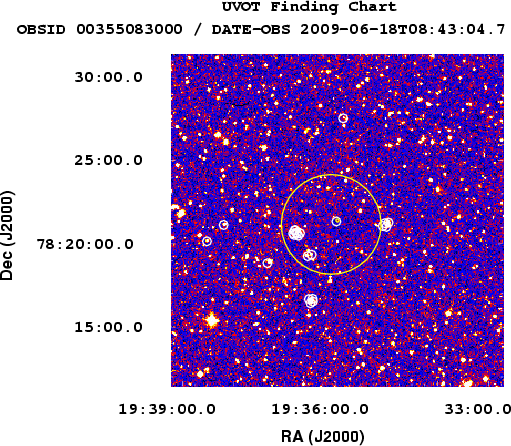
TITLE: GCN/SWIFT NOTICE
NOTICE_DATE: Thu 18 Jun 09 08:47:20 UT
NOTICE_TYPE: Swift-UVOT Image
TRIGGER_NUM: 355083, Seg_Num: 0
POINT_RA: 294.086d {+19h 36m 21s} (J2000)
POINT_DEC: +78.371d {+78d 22' 17"} (J2000)
ROLL: 25.415d
IMG_START_DATE: 15000 TJD; 169 DOY; 09/06/18
IMG_START_TIME: 31379.81 SOD {08:42:59.81} UT, 870.0 [sec] since BAT Trigger Time
FILTER: 10, White
EXPOSURE_ID: 267007384
X_OFFSET: 623 [pixels]
Y_OFFSET: 874 [pixels]
WIDTH: 160 [pixels]
HEIGHT: 160 [pixels]
X_GRB_POS: 783
Y_GRB_POS: 1034
BINNING_INDEX: 1
IM_URL: sw00355083000msuni0874.fits
SUN_POSTN: 87.01d {+05h 48m 02s} +23.41d {+23d 24' 33"}
SUN_DIST: 77.02 [deg] Sun_angle= 10.2 [hr] (West of Sun)
MOON_POSTN: 22.82d {+01h 31m 16s} +15.13d {+15d 07' 50"}
MOON_DIST: 74.95 [deg]
MOON_ILLUM: 26 [%]
GAL_COORDS: 110.40, 24.31 [deg] galactic lon,lat of the pointing direction
ECL_COORDS: 69.56, 76.37 [deg] ecliptic lon,lat of the pointing direction
COMMENTS: SWIFT-UVOT Image.
COMMENTS: The GRB Position came from the Window Position in the Mode Command.
COMMENTS: The image has 2x2 binning (compression).
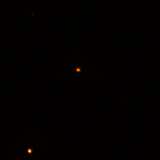
TITLE: GCN/SWIFT NOTICE
NOTICE_DATE: Thu 18 Jun 09 08:47:39 UT
NOTICE_TYPE: Swift-UVOT Processed Image
TRIGGER_NUM: 355083, Seg_Num: 0
POINT_RA: 294.086d {+19h 36m 21s} (J2000)
POINT_DEC: +78.371d {+78d 22' 17"} (J2000)
ROLL: 25.415d
IMG_START_DATE: 15000 TJD; 169 DOY; 09/06/18
IMG_START_TIME: 31379.81 SOD {08:42:59.81} UT, 870.0 [sec] since BAT Trigger Time
FILTER: 10, White
EXPOSURE_ID: 267007384
X_OFFSET: 623 [pixels]
Y_OFFSET: 874 [pixels]
WIDTH: 160 [pixels]
HEIGHT: 160 [pixels]
X_GRB_POS: 783
Y_GRB_POS: 1034
BINNING_INDEX: 1
IM_URL: sw00355083000msuni0874.fits
SUN_POSTN: 87.01d {+05h 48m 02s} +23.41d {+23d 24' 33"}
SUN_DIST: 77.02 [deg] Sun_angle= 10.2 [hr] (West of Sun)
MOON_POSTN: 22.82d {+01h 31m 16s} +15.13d {+15d 07' 54"}
MOON_DIST: 74.95 [deg]
MOON_ILLUM: 26 [%]
GAL_COORDS: 110.40, 24.31 [deg] galactic lon,lat of the pointing direction
ECL_COORDS: 69.56, 76.37 [deg] ecliptic lon,lat of the pointing direction
COMMENTS: SWIFT-UVOT Processed Image.
COMMENTS: The GRB Position came from the Window Position in the Mode Command.
COMMENTS: The image has 2x2 binning (compression).
COMMENTS: All 4 attachments are included.
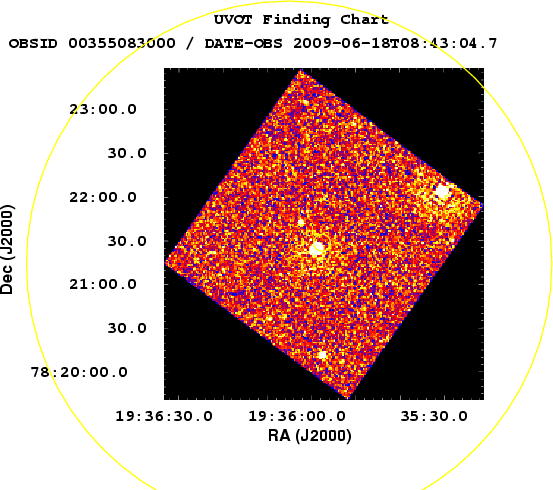
RA(J2000) = 19h 36m 05s Dec(J2000) = +78d 21' 13"with an uncertainty of 3 arcmin (radius, 90% containment, including systematic uncertainty). The BAT light curve showed multi peak structure with a duration of about 130 sec. The peak count rate was ~40,000 counts/sec (15-350 keV), at 80 sec after the trigger.
RA(J2000) = 19h 35m 57.52s Dec(J2000) = +78d 21' 27.3"with an uncertainty of 4.7 arcseconds (radius, 90% containment). This location is 28 arcseconds from the BAT onboard position, within the BAT error circle. No event data are yet available to determine the column density using X-ray spectroscopy.
TITLE: GCN/SWIFT NOTICE
NOTICE_DATE: Thu 18 Jun 09 08:49:58 UT
NOTICE_TYPE: Swift-UVOT Position
TRIGGER_NUM: 355083, Seg_Num: 0
GRB_RA: 293.9945d {+19h 35m 58.68s} (J2000),
293.8819d {+19h 35m 31.64s} (current),
294.5793d {+19h 38m 19.02s} (1950)
GRB_DEC: +78.3568d {+78d 21' 24.4"} (J2000),
+78.3782d {+78d 22' 41.4"} (current),
+78.2423d {+78d 14' 32.1"} (1950)
GRB_ERROR: 0.7 [arcsec radius, statistical only]
GRB_MAG: 14.34 +/- 0.01 [mag]
FILTER: 10, White
IMG_START_DATE: 15000 TJD; 169 DOY; 09/06/18
IMG_START_TIME: 30641.00 SOD {08:30:41.00} UT, 131.2 [sec] since BAT Trigger Time
SUN_POSTN: 87.01d {+05h 48m 02s} +23.41d {+23d 24' 33"}
SUN_DIST: 77.04 [deg] Sun_angle= 10.2 [hr] (West of Sun)
MOON_POSTN: 22.84d {+01h 31m 21s} +15.14d {+15d 08' 23"}
MOON_DIST: 74.97 [deg]
MOON_ILLUM: 26 [%]
GAL_COORDS: 110.38, 24.33 [deg] galactic lon,lat of the burst (or transient)
ECL_COORDS: 69.58, 76.40 [deg] ecliptic lon,lat of the burst (or transient)
COMMENTS: SWIFT UVOT Position Notice.
COMMENTS: This Notice was ground-generated -- not flight-generated.
COMMENTS: The UVOT position is 4.3 arcsec from the XRT position.
RA 19:35:58.80 dec +78:21:25.5Further follow-up is in progress.
start UT mag mlim(of image) ---------------------------------- 08:28:29.8 14.1 16.2This source is not visible in DSS (second epoch), 2MASS or the MPChecker database. Continuing observations are in progress.
t_mid(seconds) exp(s) mag mag_err
---------------------------------------
76 2.0 13.61 0.03
92 2.0 13.99 0.04
117 2.0 13.50 0.03
237 20.0 14.02 0.02
436 20.0 14.73 0.02
729 20.0 15.26 0.02
2601 20.0 16.22 0.02
7329 120.0 17.02 0.03
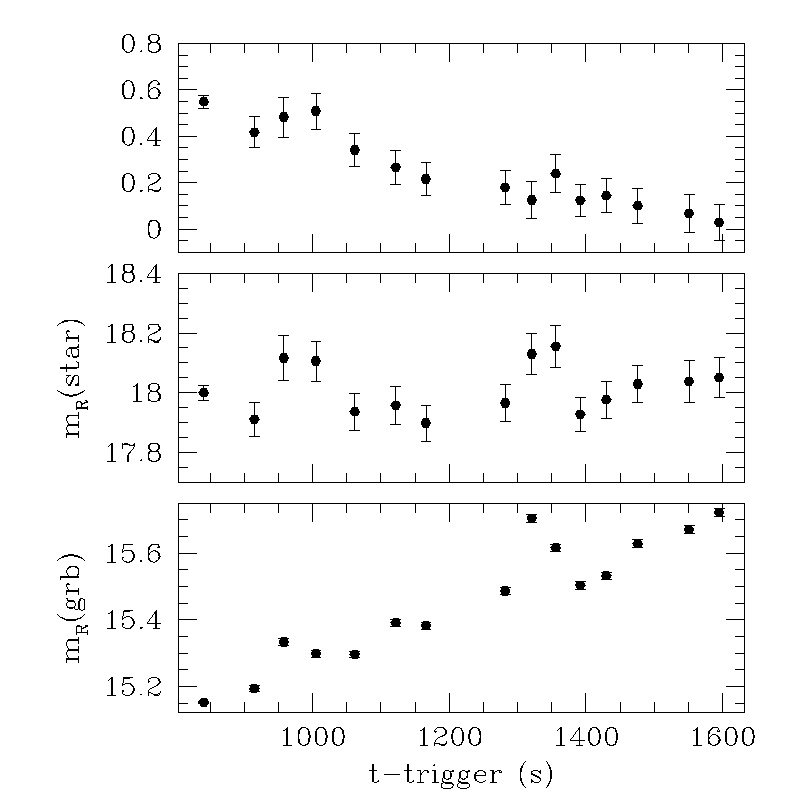
RA (J2000): 19h 35m 58.33s Dec (J2000): +78d 21' 25.3"with an uncertainty of 1.7 arcsec (radius, 90% confidence).
Filter T_start(s) T_stop(s) Exp(s) Mag white 129 279 147 14.27+/-0.01 v 671 691 19 15.60+/-0.09 b 596 616 19 15.92+/-0.06 u 340 590 246 14.62+/-0.01 uvw1 720 740 19 15.09+/-0.08 uvm2 695 715 19 15.23+/-0.12 uvw2 647 667 19 15.27+/-0.10The values quoted above are not corrected for the Galactic extinction due= =20 to the reddening of E(B-V) =3D 0.09 in the direction of the burst=20 (Schlegel=C2=A0et al. 1998). The photometry is on the UVOT photometric sy= stem=20 described=C2=A0in Poole et al. (2008, MNRAS, 383, 627).
Time Filter Exp Mag ------------------------------------ 5400 I 45 16.2 +/- 0.05 6300 R 45 16.8 +/- 0.05Further observations are planned.
RA(J2000) = 19h 36m 01.8s Dec(J2000) = +78d 21' 07.1"with an uncertainty of 0.46 arcmin, (radius, sys+stat, 90% containment). The partial coding was 62.5%.
t_exp t-T0 R-mag 300s 13.6 hours 18.9 =B1 0.1 300s 15.6 hours 19.1 =B1 0.1 300s 17.9 hours 19.3 =B1 0.1The calibration is still preliminary and determined against stars in the USNO catalog.
UT(middle) Exposure R Error ---------- -------- ----- ----- 21:30:03 5x4min 18.67 0.14 21:50:51 5x4min 18.57 0.09 22:42:14 4x4min 18.62 0.09 23:21:44 5x4min 18.92 0.13 23:45:19 2x4min 18.96 0.13All magnitudes have been calibrated using stars in the field and the USNO-B1 catalog (R1 mags).
T0+ Filter, Exposure, mag., err. (d) (s) 0.4763 R 60 18.60 +/-0.05 0.5680 R 60 18.87 +/-0.03 0.6496 R 60 19.17 +/-0.04 0.6796 R 60 19.19 +/-0.10The power low index of light curve approximation between 0.48 - 0.65 days is ~ -1.6, while after 0.65 days after burst onset we observe flattening of the light curve. A finding chart can be found at http://grb.rssi.ru/GRB090618/GRB090618_090618_R_ZTSh.gif
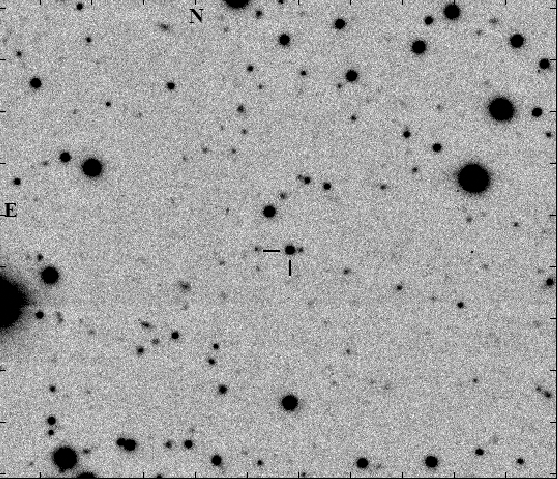
middle date, UT results
-------------------------------------------------------
spectrum 19.977 June 2009 [OII]3727A detection
Rc 19.941 June 2009 20.51 +/- 0.06
This message can be cited.
time post burst exp. filt mag m_err [s] [s] 210 93.6 J 12.7 0.1 210 93.6 H 12.1 0.1 210 93.6 Ks 11.4 0.2 2818 327 J 15.1 0.1 2818 327 H 14.6 0.1 2818 327 Ks 13.7 0.1 10636 585 J 16.2 0.2 10636 585 H 15.7 0.2 10636 585 Ks >14.8 3-sigmaIntermittent clouds led to highly variable transmission and sky brightnesses during the PAIRITEL observations. All magnitudes are given in the Vega system, calibrated to 2MASS. No correction for Galactic extinction has been made to the above reported values. Further analysis is ongoing.
dN/dE ~ E^{-alpha} * exp(-(2-alpha)*E/Epeak) with
alpha: 1.21 $B!^(B 0.13, and
Epeak: 623 (-39, +44) keV (chi2/d.o.f. = 41/50).
Due to the brightness of this burst, a 3% systematic error
was added for low energy channels.
All the quoted errors are at 90% confidence level,
1-s peak flux : 9.83 (-0.36, +0.26) x 10^-6 erg/cm^2/s The fluence in 100 - 1000 keV: (1.58 +/- 0.07) x 10^-4 erg/cm^2 The photon index for time-averaged spectrum : 2.32 +/- 0.04 alpha for 1-s peak spsctrum: 1.21 +/- 0.13We apologize for any inconvenience.
Time Filter Exp Mag ------------------------------------ 0.84 R 1215 19.4 +/- 0.1 0.86 I 1215 18.8 +/- 0.1http://www.saraobservatory.org/
Date Mid UT Exposure R Mag Error 18-06-2009 19:29 300sec 18.70 0.07 18-06-2009 19:36 300sec 18.75 0.06 19-06-2009 22:08 2x300+450 20.30 0.09
yymmdd.ddd hhmm-hhmm S rms
UT microJy microJy
090619.073 0245-0415 425 120
090619.208 0415-0545 640 120
090620.182 0340-0505 415 87
090621.275 0536-0736 139 91
090622.175 0328-0457 63 96
090627.021 0013-0048 -127 190
These results may be quoted in publications.
T0+ Filter, Exposure, mag., err. (d) (s) 0.4083 R 10x30 18.60 +/-0.10